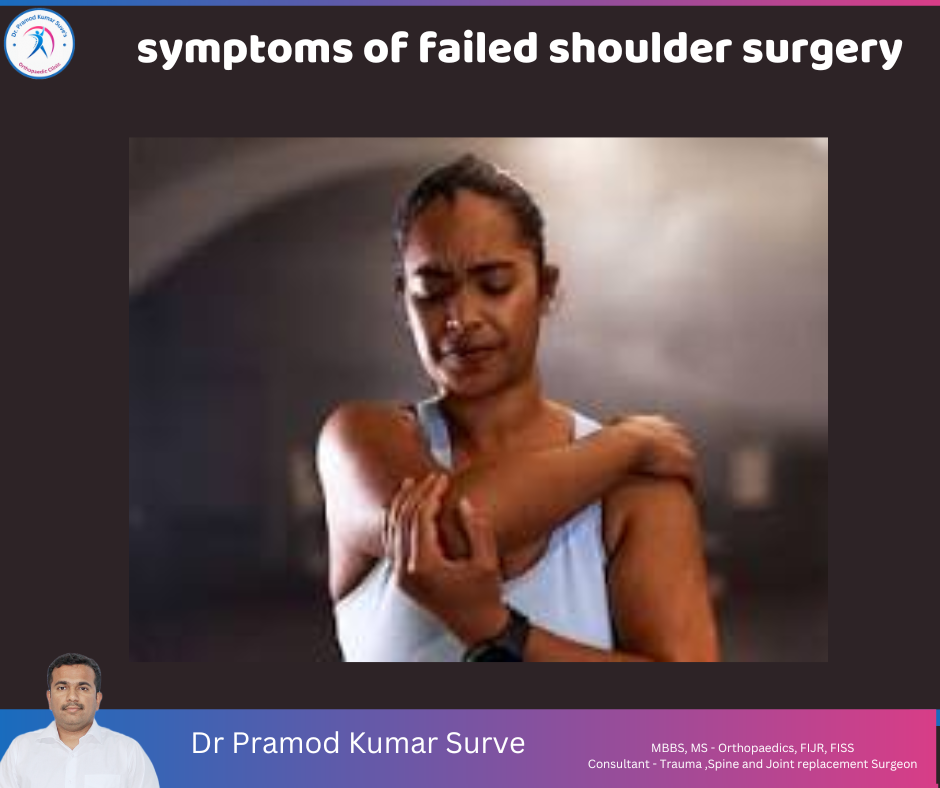Symptoms of a failed surgery
The symptoms of failed shoulder surgery may vary depending on the type of procedure and the individual. Types of surgery include procedures on the rotator cuff, labrum, or biceps tendon.
Some discomfort and swelling are typical when recovering from these surgeries, but persistent problems—oor symptoms that reoccur after recovering from the surgery—mmay indicate the procedure has failed. The symptoms may include:
- persistent pain that does not improve with rest or medications
- decreased range of motion in the joint
- popping, clicking, or grinding sounds when moving the joint
- muscle weakness or atrophy
- swelling in the joint
If surgery does not meet the goals set by the surgeon and the individual, they may consider the surgery to be a failure. These goals can include reducing pain, restoring range of motion in the joint, improving strength or stability, and restoring function.
A surgery may not meet these goals for a range of reasons, includingTrusted Source:
- bone loss
- surgical or technical errors
- the formation of scar tissue
- new injuries that damage the shoulder after surgery
The rate of failed shoulder surgery depends on the type of procedure, patient characteristics, and surgeon experience. According to a 2017 literature reviewTrusted Source, generally, the failure rate is 5–30% after primary open or arthroscopic surgery. Failed revision surgery has higher failure rates, at around 22%.
For Bankart repair, which is a procedure that repairs labral tears, the failure rate is 6–30%.
Estimates for the failure rate of rotator cuff repair vary significantly among studies. According to a 2020 review, anywhere between 11 and 94% of patients experience retearing or failure to heal, but this varies based on factors such as age and the size of the tear.
The time from shoulder surgery to a person reporting these symptoms is highly variable. Older data suggests that around 3 in 10 cases present in the first year following surgery, with the average being 48.7 months.
However, it can take time to determine whether shoulder surgery has been successful. Some problems can present years later.
A doctor may diagnose a failed shoulder surgery by monitoring a person’s symptoms over time. If symptoms persist, a doctor may carry out a physical examination and review the surgical procedure in detail to determine whether it failed.
A doctor may also order X-rays, MRI scans, or an ultrasound to see the bones and tissues around the shoulder.
The treatment for complications of failed shoulder surgery will vary based on the symptoms a person has and the severity of the problem. The options may include:
- nonsurgical treatments, such as physical therapy or medications
- revision surgery to repair any additional tissue damage or replace components
- arthroplasty, or joint replacement, if no other options are available
Revision surgery can be complex. Doctors may only consider it when symptoms persist or worsen after nonsurgical treatments.
Eligibility for revision surgery may depend on the procedure, but for failed rotator cuff repair, the ideal candidate is:
- is younger than 70 years
- has more than 90 degrees of forward elevation
- had only tendon suturing or reattachment in the first surgery
The revision procedure depends on the symptoms and surgical techniques used in the initial procedure. The surgeon may need to remove scar tissue, repair any additional damage, or replace a component in the shoulder joint.
